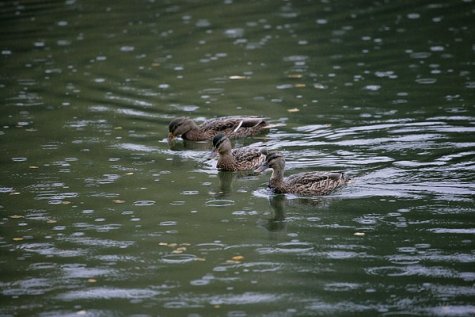Mallards in similar plumages
Photo: Arne Ader
Translation: Liis
Mallards in rain
Mallard Sinikael-part Anas platyrhynchos
In the hunting season dabbling ducks are shy of people and with reason, but we can still see and hear them. Our large and most familiar ducks all look alike – the males are in resting or eclipse plumage, becoming colourful again in late autumn.
They can still be distinguished aided by a pair of binoculars, but as regards city ducks things can be comfortably studied from a park bench. The beaks of males are yellow throughout the year, those of females orange with dark brown patches. This year’s juveniles are more similar to the females but their breast plumage is darker and irregularly flecked and the tail feathers are still narrower. The basic characteristic of mallards does not disappear – the wing patch or speculum is dark blue and iridescent, bordered in black and white.
The call of the females when the bird rises in flight on being scared is familiar, reminding of the calls of domestic ducks. Incidentally, domestic ducks were bred from mallards. The calls of the males are fast and higher-pitched - - quack-quack-quack-quack









